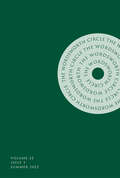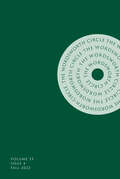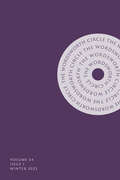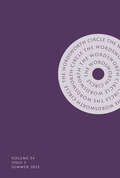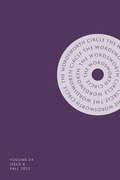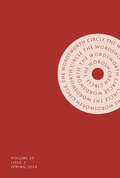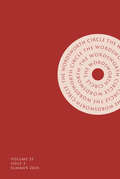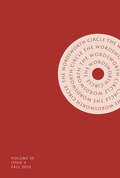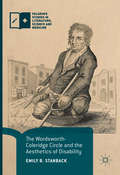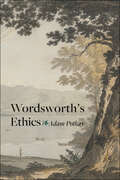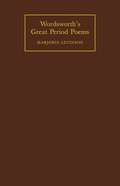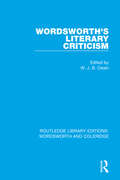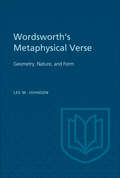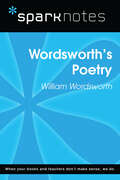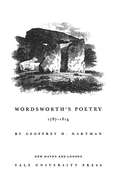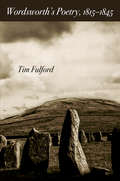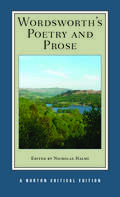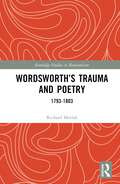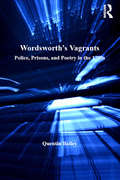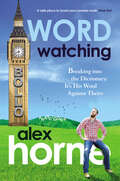- Table View
- List View
The Wordsworth Circle, volume 53 number 1 (Winter 2022)
by The Wordsworth CircleThis is volume 53 issue 1 of The Wordsworth Circle. The Wordsworth Circle (TWC) is an international quarterly learned journal founded in 1970 to facilitate communications among colleagues interested in the lives, works, and times of British, American, and European writers from 1770 to 1850, before and after. TWC publishes original essays, conference papers, letters, editions, bibliographies, textual and historical scholarship, biography, interpretive criticism, and critical theory, as well as interdisciplinary, cultural, and comparative studies. It is concerned with anything that influenced, impinges upon, expresses, or contributes to an understanding of the writers, works, and events associated with Romantic studies and its after-lives.
The Wordsworth Circle, volume 53 number 2 (Spring 2022)
by The Wordsworth CircleThis is volume 53 issue 2 of The Wordsworth Circle. The Wordsworth Circle (TWC) is an international quarterly learned journal founded in 1970 to facilitate communications among colleagues interested in the lives, works, and times of British, American, and European writers from 1770 to 1850, before and after. TWC publishes original essays, conference papers, letters, editions, bibliographies, textual and historical scholarship, biography, interpretive criticism, and critical theory, as well as interdisciplinary, cultural, and comparative studies. It is concerned with anything that influenced, impinges upon, expresses, or contributes to an understanding of the writers, works, and events associated with Romantic studies and its after-lives.
The Wordsworth Circle, volume 53 number 3 (Summer 2022)
by The Wordsworth CircleThis is volume 53 issue 3 of The Wordsworth Circle. The Wordsworth Circle (TWC) is an international quarterly learned journal founded in 1970 to facilitate communications among colleagues interested in the lives, works, and times of British, American, and European writers from 1770 to 1850, before and after. TWC publishes original essays, conference papers, letters, editions, bibliographies, textual and historical scholarship, biography, interpretive criticism, and critical theory, as well as interdisciplinary, cultural, and comparative studies. It is concerned with anything that influenced, impinges upon, expresses, or contributes to an understanding of the writers, works, and events associated with Romantic studies and its after-lives.
The Wordsworth Circle, volume 53 number 4 (Autumn 2022)
by The Wordsworth CircleThis is volume 53 issue 4 of The Wordsworth Circle. The Wordsworth Circle (TWC) is an international quarterly learned journal founded in 1970 to facilitate communications among colleagues interested in the lives, works, and times of British, American, and European writers from 1770 to 1850, before and after. TWC publishes original essays, conference papers, letters, editions, bibliographies, textual and historical scholarship, biography, interpretive criticism, and critical theory, as well as interdisciplinary, cultural, and comparative studies. It is concerned with anything that influenced, impinges upon, expresses, or contributes to an understanding of the writers, works, and events associated with Romantic studies and its after-lives.
The Wordsworth Circle, volume 54 number 1 (Winter 2023)
by The Wordsworth CircleThis is volume 54 issue 1 of The Wordsworth Circle. The Wordsworth Circle (TWC) is an international quarterly learned journal founded in 1970 to facilitate communications among colleagues interested in the lives, works, and times of British, American, and European writers from 1770 to 1850, before and after. TWC publishes original essays, conference papers, letters, editions, bibliographies, textual and historical scholarship, biography, interpretive criticism, and critical theory, as well as interdisciplinary, cultural, and comparative studies. It is concerned with anything that influenced, impinges upon, expresses, or contributes to an understanding of the writers, works, and events associated with Romantic studies and its after-lives.
The Wordsworth Circle, volume 54 number 3 (Summer 2023)
by The Wordsworth CircleThis is volume 54 issue 3 of The Wordsworth Circle. The Wordsworth Circle (TWC) is an international quarterly learned journal founded in 1970 to facilitate communications among colleagues interested in the lives, works, and times of British, American, and European writers from 1770 to 1850, before and after. TWC publishes original essays, conference papers, letters, editions, bibliographies, textual and historical scholarship, biography, interpretive criticism, and critical theory, as well as interdisciplinary, cultural, and comparative studies. It is concerned with anything that influenced, impinges upon, expresses, or contributes to an understanding of the writers, works, and events associated with Romantic studies and its after-lives.
The Wordsworth Circle, volume 54 number 4 (Autumn 2023)
by The Wordsworth CircleThis is volume 54 issue 4 of The Wordsworth Circle. The Wordsworth Circle (TWC) is an international quarterly learned journal founded in 1970 to facilitate communications among colleagues interested in the lives, works, and times of British, American, and European writers from 1770 to 1850, before and after. TWC publishes original essays, conference papers, letters, editions, bibliographies, textual and historical scholarship, biography, interpretive criticism, and critical theory, as well as interdisciplinary, cultural, and comparative studies. It is concerned with anything that influenced, impinges upon, expresses, or contributes to an understanding of the writers, works, and events associated with Romantic studies and its after-lives.
The Wordsworth Circle, volume 55 number 1 (Winter 2024)
by The Wordsworth CircleThis is volume 55 issue 1 of The Wordsworth Circle. The Wordsworth Circle (TWC) is an international quarterly learned journal founded in 1970 to facilitate communications among colleagues interested in the lives, works, and times of British, American, and European writers from 1770 to 1850, before and after. TWC publishes original essays, conference papers, letters, editions, bibliographies, textual and historical scholarship, biography, interpretive criticism, and critical theory, as well as interdisciplinary, cultural, and comparative studies. It is concerned with anything that influenced, impinges upon, expresses, or contributes to an understanding of the writers, works, and events associated with Romantic studies and its after-lives.
The Wordsworth Circle, volume 55 number 2 (Spring 2024)
by The Wordsworth CircleThis is volume 55 issue 2 of The Wordsworth Circle. The Wordsworth Circle (TWC) is an international quarterly learned journal founded in 1970 to facilitate communications among colleagues interested in the lives, works, and times of British, American, and European writers from 1770 to 1850, before and after. TWC publishes original essays, conference papers, letters, editions, bibliographies, textual and historical scholarship, biography, interpretive criticism, and critical theory, as well as interdisciplinary, cultural, and comparative studies. It is concerned with anything that influenced, impinges upon, expresses, or contributes to an understanding of the writers, works, and events associated with Romantic studies and its after-lives.
The Wordsworth Circle, volume 55 number 3 (Summer 2024)
by The Wordsworth CircleThis is volume 55 issue 3 of The Wordsworth Circle. The Wordsworth Circle (TWC) is an international quarterly learned journal founded in 1970 to facilitate communications among colleagues interested in the lives, works, and times of British, American, and European writers from 1770 to 1850, before and after. TWC publishes original essays, conference papers, letters, editions, bibliographies, textual and historical scholarship, biography, interpretive criticism, and critical theory, as well as interdisciplinary, cultural, and comparative studies. It is concerned with anything that influenced, impinges upon, expresses, or contributes to an understanding of the writers, works, and events associated with Romantic studies and its after-lives.
The Wordsworth Circle, volume 55 number 4 (Autumn 2024)
by The Wordsworth CircleThis is volume 55 issue 4 of The Wordsworth Circle. The Wordsworth Circle (TWC) is an international quarterly learned journal founded in 1970 to facilitate communications among colleagues interested in the lives, works, and times of British, American, and European writers from 1770 to 1850, before and after. TWC publishes original essays, conference papers, letters, editions, bibliographies, textual and historical scholarship, biography, interpretive criticism, and critical theory, as well as interdisciplinary, cultural, and comparative studies. It is concerned with anything that influenced, impinges upon, expresses, or contributes to an understanding of the writers, works, and events associated with Romantic studies and its after-lives.
The Wordsworth-Coleridge Circle and the Aesthetics of Disability (Palgrave Studies in Literature, Science and Medicine)
by Emily B. StanbackThis book argues for the importance of disability to authors of the Wordsworth-Coleridge circle. By examining texts in a variety of genres -- ranging from self-experimental medical texts to lyric poetry to metaphysical essays -- Stanback demonstrates the extent to which non-normative embodiment was central to Romantic-era thought and Romantic-era aesthetics. The book reassesses well-known literary and medical works by such authors as William Wordsworth, Samuel Taylor Coleridge, and Humphry Davy, argues for the importance of lesser-studied work by authors including Charles Lamb and Thomas Beddoes, and introduces significant unpublished work by Tom Wedgwood.
Wordsworth's Ethics
by Adam PotkayA comprehensive examination that breathes new life into Wordsworth and the ethical concerns that were vital to his nineteenth-century readers.Why read Wordsworth’s poetry—indeed, why read poetry at all? Beyond any pleasure it might give, can it make one a better or more flourishing person? These questions were never far from William Wordsworth’s thoughts. He responded in rich and varied ways, in verse and in prose, in both well-known and more obscure writings.Wordsworth's Ethics is a comprehensive examination of the Romantic poet’s work, delving into his desire to understand the source and scope of our ethical obligations. Adam Potkay finds that Wordsworth consistently rejects the kind of impersonal utilitarianism that was espoused by his contemporaries James Mill and Jeremy Bentham in favor of a view of ethics founded in relationships with particular persons and things. The discussion proceeds chronologically through Wordsworth’s career as a writer—from his juvenilia through his poems of the 1830s and '40s—providing a valuable introduction to the poet’s work. The book will appeal to readers interested in the vital connection between literature and moral philosophy.
Wordsworth's Great Period Poems: Four Essays
by Marjorie LevinsonThe book presents four major poems from Wordsworth's great period of creativity, 1798-1805: Tintern Abbey, Michael, The Intimations Ode, Peele Castle.
Wordsworth's Historical Imagination: The Poetry of Displacement (Routledge Revivals)
by David SimpsonTraditionally, Wordsworth’s greatness is founded on his identity as the poet of nature and solitude. The Wordsworthian imagination is seen as an essentially private faculty, its very existence premised on the absence of other people. In this title, first published in 1987, David Simpson challenges this established view of Wordsworth, arguing that it fails to recognize and explain the importance of the context of the public sphere and the social environment to the authentic experience of the imagination. Wordsworth’s preoccupation with the metaphors of property and labour shows him to be acutely anxious about the value of his art in a world that he regarded as corrupted. Through close examination of a few important poems, both well-known and relatively unknown, Simpson shows that there is no unitary, public Wordsworth, nor is there a conflict or tension between the private and the public. The absence of any clear kind of authority in the voice that speaks the poems makes Wordsworth’s poetry, in Simpson’s phrase, a ‘poetry of displacement’.
Wordsworth's Literary Criticism (RLE: Wordsworth and Coleridge #13)
by W. J. B. OwenFirst published in 1974. Wordsworth, with Coleridge, is the major literary critic of the Romantic period. This volume assembles all of Wordsworth’s formal critical writings and a selection of critical comments from his correspondence. These documents are invaluable for Romantic poetry at large, and his theories — particularly on poetic diction, ordinary language and the nature of the creative process — inspired lively critical debate. This book discusses the nature and origin of Wordsworth’s criticism in general, and the literary tradition from which they sprang. The texts are succinctly annotated and there is a select bibliography. This book will be of interest to students of literature.
Wordsworth's Metaphysical Verse: Geometry, Nature, and Form
by Lee JohnsonIn his philosophic verse, Woodsworth identifies the history of poetry and geometrical thought as the two chief treasures of the mind and as main sources of his poetic inspiration. He assigns transcendental value to geometry and indicates that he attempts to apply its proportions to the laws of nature. In this book, Professor Johnson demonstrates how Wordsworth also employed geometrical patterns in the metrical construction of his verse and how the character of those patterns can be related to the poet's major philosophical values. Johnson shows how Wordsworth, when writing about the nature and significance of geometrical thought in The Prelude and The Excursion, designs his verse paragraphs in accordance with simple geometrical proportions which are thereby associated with the metaphysical value he attributes to geometry. Wordsworth finds geometrical forms to be hidden in the natural landscape and inherent in the structures of perception itself. This book is the first to make a sustained description of Wordsworth's symbolic patterns and metrical forms in his philosophic verse, with major examples drawn from Tintern Abbey, The Prelude, The Excursion, and the Immortality Ode. Although it presents an approach which differs radically from any in the established criticism of the poet, it is basically at one with the large body of work that concerns the nature of Wordsworth's imagination.
Wordsworth's Poetic Collections, Supplementary Writing and Parodic Reception (The History of the Book #10)
by Brian R BatesWordsworth’s process of revision, his organization of poetic volumes and his supplementary writings are often seen as distinct from his poetic composition. Bates asserts that an analysis of these supplementary writings and paratexts are necessary to a full understanding of Wordsworth’s poetry.
Wordsworth's Poetry (SparkNotes Literature Guide Series)
by SparkNotesWordsworth's Poetry (SparkNotes Literature Guide) by William Wordsworth Making the reading experience fun! Created by Harvard students for students everywhere, SparkNotes is a new breed of study guide: smarter, better, faster. Geared to what today's students need to know, SparkNotes provides: *Chapter-by-chapter analysis *Explanations of key themes, motifs, and symbols *A review quiz and essay topicsLively and accessible, these guides are perfect for late-night studying and writing papers
Wordsworth’s Poetry 1787-1814
by Geoffrey HartmanThe drama of consciousness and maturation in the growth of a poet's mind is traced from Wordsworth's earliest poems to The Excursion of 1814. Mr. Hartman follows Wordsworth's growth into self-consciousness, his realization of the autonomy of the spirit, and his turning back to nature. The apocalyptic bias is brought out, perhaps for the first time since Bradley's Oxford Lectures, and without slighting in any way his greatness as a nature poet. Rather, a dialectical relation is established between his visionary temper and the slow and vacillating growth of the humanized or sympathetic imagination. Mr. Hartman presents a phenomenology of the mind with important bearings on the Romantic movement as a whole and as confirmation of Wordsworth's crucial position in the history of English poetry. Mr. Hartman is professor of English and comparative literature at the University of Iowa. "A most distinguished book, subtle, penetrating, profound."--Rene Wellek. "If it is the purpose of criticism to illuminate, to evaluate, and to send the reader back to the text for a fresh reading, Hartman has succeeded in establishing the grounds for such a renewal of appreciation of Wordsworth."--Donald Weeks, Journal of Aesthetics and Art Criticism.
Wordsworth's Poetry, 1815-1845 (Haney Foundation Series)
by Tim FulfordThe later poetry of William Wordsworth, popular in his lifetime and influential on the Victorians, has, with a few exceptions, received little attention from contemporary literary critics. In Wordsworth's Poetry, 1815-1845, Tim Fulford argues that the later work reveals a mature poet far more varied and surprising than is often acknowledged. Examining the most characteristic poems in their historical contexts, he shows Wordsworth probing the experiences and perspectives of later life and innovating formally and stylistically. He demonstrates how Wordsworth modified his writing in light of conversations with younger poets and learned to acknowledge his debt to women in ways he could not as a young man. The older Wordsworth emerges in Fulford's depiction as a love poet of companionate tenderness rather than passionate lament. He also appears as a political poet—bitter at capitalist exploitation and at a society in which vanity is rewarded while poverty is blamed. Most notably, he stands out as a history poet more probing and more clear-sighted than any of his time in his understanding of the responsibilities and temptations of all who try to memorialize the past.
Wordsworth’s Poetry and Prose
by Nicholas HalmiThis Norton Critical Edition presents a generous selection of William Wordworth's poetry (including the thirteen-book Prelude of 1805) and prose works along with supporting materials for in-depth study. Together, the Norton Critical Editions of Wordsworth's Poetry and Prose and The Prelude: 1799, 1805, 1850 are the essential texts for studying this author. Wordsworth's Poetry and Prose includes a large selection of texts chronologically arranged, thereby allowing readers to trace the author's evolving interests and ideas. An insightful general introduction and textual introduction precede the texts, each of which is fully annotated. Illustrative materials include maps, manuscript pages, and title pages. "Criticism" collects thirty responses to Wordsworth's poetry and prose spanning three centuries by British and American authors. Contributors include Samuel Taylor Coleridge, Percy Bysshe Shelley, Felicia Hemans, Ralph Waldo Emerson, Lucy Newlyn, Stephen Gill, Neil Fraistat, Mary Jacobus, Nicholas Roe, M. H. Abrams, Karen Swann, Michael O'Neill, and Geoffrey Hartman, among others. The volume also includes a Chronology, a Biographical Register, a Selected Bibliography, and an Index of Titles and First Lines of Poems.
Wordsworth’s Trauma and Poetry: 1793–1803 (Routledge Studies in Romanticism)
by Richard E. MatlakBased upon the testimony of Thomas Carlyle, most biographers acknowledge that Wordsworth witnessed the beheading of the journalist Antoine Gorsas in October 1793 during the Reign of Terror. But they go no further. This study reads the Poet’s reactions to the Terror in passages from The Prelude as explicitly about his twenty-three-year-old-self witnessing the gory deaths of Gorsas and others, which caused post-traumatic stress disorder and its symptoms, exacerbated by guilt for abandoning his French lover and their child a year earlier. Following a chronological arc from October 1793, when the trauma began, until its conclusion in October 1803, when Wordsworth became a poet-soldier, I examine poetic works from The Borderers (1796), the “Discharged Soldier’ (1798), the Two-Part Prelude (1799), Home at Grasmere (1800), and the Liberty sonnets (1803), to follow the Poet working through anxiety, fear, and remorse to a resolution.
Wordsworth's Vagrants: Police, Prisons, and Poetry in the 1790s (British Literature In Context In The Long Eighteenth Century Ser.)
by Quentin BaileyWordsworth's Vagrants explores the poet's treatment of the 'idle and disorderly' in the context of the penal laws of the 1790s, when the terror of the French Revolution caused a crackdown on the beggars and vagrants who roamed the English countryside. From his work on the Salisbury Plain poems through to the poetry about vagrants, beggars, and lunatics in Lyrical Ballads, Quentin Bailey argues, Wordsworth attempted to imagine a way of relating to the vagrant and criminal poor that could challenge the systematizing impulses of William Pitt and Jeremy Bentham. Whereas writers had previously relied on sensibility and fellow-feeling to reveal the correct ordering of society, Wordsworth was writing in a period in which legislators, magistrates, and commentators agreed that a more aggressively interventionist approach and new institutional solutions were needed to tackle criminality and establish a disciplined and obedient workforce. Wordsworth's interest in individual psychology and solitude, Bailey suggests, grew out of his specific awareness of the Bloody Code and the discussions surrounding it. His study offers a way of reading Wordsworth's poetry that is sensitive to his early radicalism but which does not equate socio-political engagement solely with support for the French Revolution.
Wordwatching: Breaking into the Dictionary: It's His Word Against Theirs
by Alex HorneAlex Horne loves words. He loves them so much, in fact, that he's decided to invent his own ... and get them into the dictionary. But, as Alex discovers, gaining entry into the official lexicon takes more than just a gentle word in the ear of the editor. Evidence is required - Alex needs proof that his words are being spoken by more people than just him and his mum. He needs what the dictionary authorities call a 'corpus' of examples, hard data showing that his new words are in widespread and long-term usage. So a corpus he resolves to create, no matter what obstacles he might meet on the way. This is the epic and ridiculous story of one man's struggle to break into the dictionary. From covert word-dropping on Countdown to wilfully misinforming schoolchildren, Alex tries it all in his quest for dictionary-based immortality. Does he succeed? Are you already using one of Alex's words without realising it? You won't regret spending your hard-earned honk on this hugely entertaining book.


